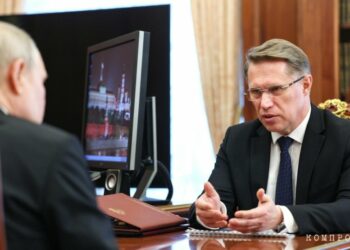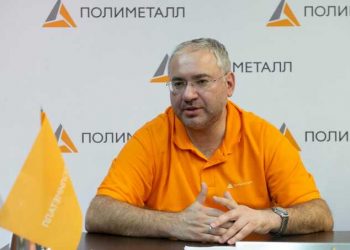The US Treasury Department, as part of a new package of sanctions against Russia announced on May 19, established an obligation for US persons to report on the presence of assets of the Bank of Russia, the National Wealth Fund (NWF) or the Russian Ministry of Finance at their disposal. They must submit their first such report by June 18, 2023, and then report annually until June 30.
At the end of February 2022, the G7 countries made an unprecedented decision to “paralyze” the assets of the Russian Central Bank in their jurisdictions. In fact, this meant freezing the assets of the Central Bank, which were kept in accounts in the central banks of the eurozone countries, the USA, Great Britain, Canada, in commercial banks of these countries or with other financial service providers, such as custodian banks. Russian Finance Minister Anton Siluanov said that Russia’s reserves were frozen in the equivalent of $300 billion.
However, unlike the blocking of assets of persons included in the US SDN sanctions list, when American financial institutions are required to report on blocked assets, in the case of the Central Bank / NWF / Ministry of Finance, with which any transactions were prohibited, American operators did not have such an obligation.
U.S. operators must now include in their report information about the name and address of the person who holds the assets of the Bank of Russia, the NWF or the Ministry of Finance of Russia, the date these assets came under their management or custody, the type of assets and their exact location, the actual or estimated value of these assets as of May 31.
The European authorities admitted that they do not know exactly which operators hold these assets: in the tenth package of sanctions against Russia, the EU Council just included an obligation for banks to report on possible assets of the Bank of Russia that are at their disposal. In November 2022, the European Commission called for the use of the Bank of Russia’s reserves frozen in Europe to restore Ukraine, and at the same time, Brussels presented options for the EU countries to create a special structure that could manage the frozen reserves. In March 2023, the European publication Politico wrote that the European Commission estimates the foreign exchange assets of the Russian Central Bank frozen in the EU at about € 210 billion, and investing them in highly rated liquid instruments could bring income at the rate of 2.6% per year.
“In the long term, when the sanctions are lifted, the assets of the Central Bank will need to be returned. This may be tied to a peace agreement, as a result of which Ukraine will receive compensation for the damage it has suffered,” the European Commission also wrote in November.
Sanctions against engineering and architectural services
In the new package, the United States has also once again expanded the list of sectors of the Russian economy against specific participants in which blocking sanctions may (but will not necessarily be imposed) be imposed. Now it is the architectural, engineering, construction, manufacturing and transportation industries. Previously, such industries included quantum computing, accounting services and management consulting, aerospace, shipping, electronics, financial services, technology and defense sectors, metals and mining. For belonging to the manufacturing sector, the US Treasury has included Uralmash Oil and Gas Equipment Holding on the SDN sanctions list, according to a press release from the ministry.
In addition, the United States banned the export to Russia or the provision of architectural and engineering services by American persons to Russian persons. The ban does not apply to the provision of relevant services for Russian subsidiaries of American corporations, as well as in the interests of the sale of Russian businesses by foreigners. According to the Bank of Russia, in 2021 Russia imported services in the field of architecture, engineering and technical services from the United States in the amount of $181 million.
In total, the US Treasury on May 19 imposed sanctions against 22 individuals and 104 organizations associated with Russia and 20 countries or jurisdictions that, according to US authorities, were used to circumvent sanctions (including Liechtenstein, India, the Netherlands, Poland, Finland). In particular, more than 30 Russian companies that import or manufacture electronic components, semiconductors or microelectronics have been added to the sanctions list.
Among the largest companies against which the US has imposed sanctions are the leading gold producer in Russia PJSC Polyus and JSC Polymetal, the Russian holding structure of the Jersey-based Polymetal International. The US Treasury emphasized that blocking sanctions against Polymetal only apply to it and any companies in which it owns 50% or more, but does not affect Polymetal International PLC (Jersey Island). Polymetal International is not controlled by sanctioned persons, the department also indicated that, accordingly, American persons have the right to do business with Polymetal International.
Polymetal International plans to redomiciliate to Kazakhstan, and is also preparing to complete the separation of Russian and Kazakh assets in the second half of 2024.








